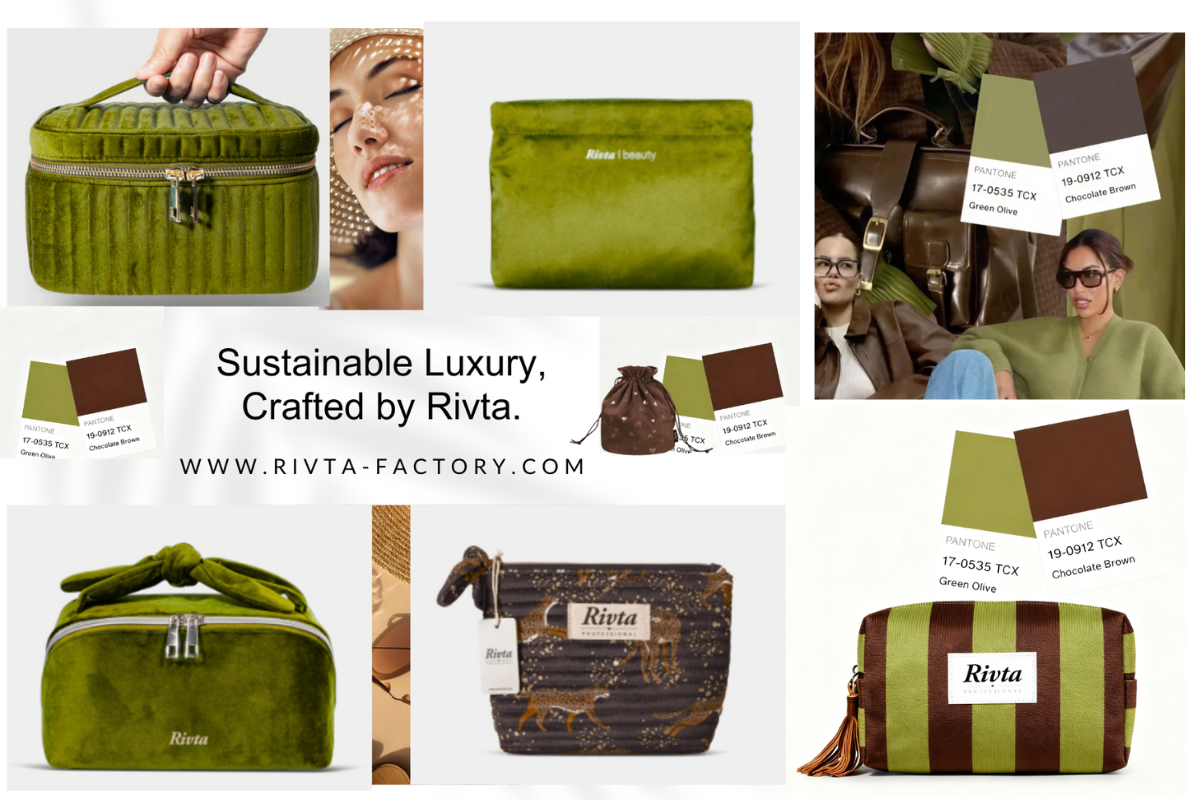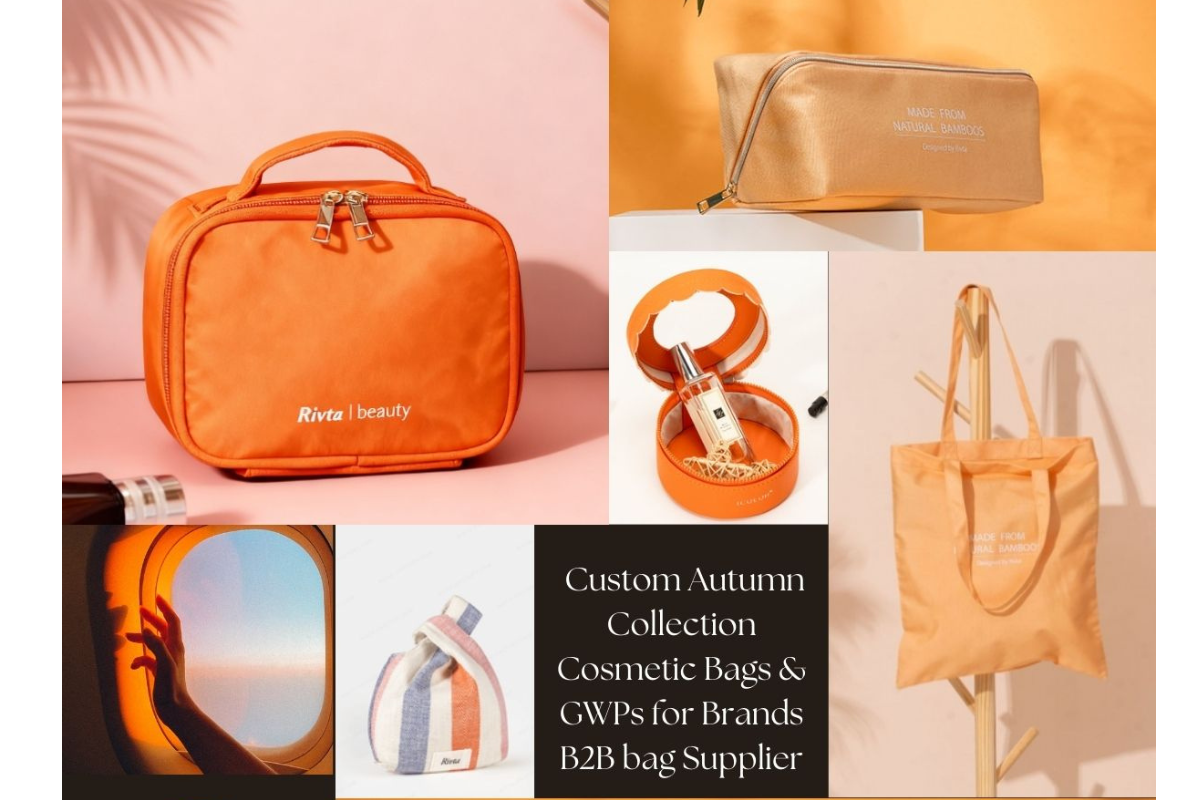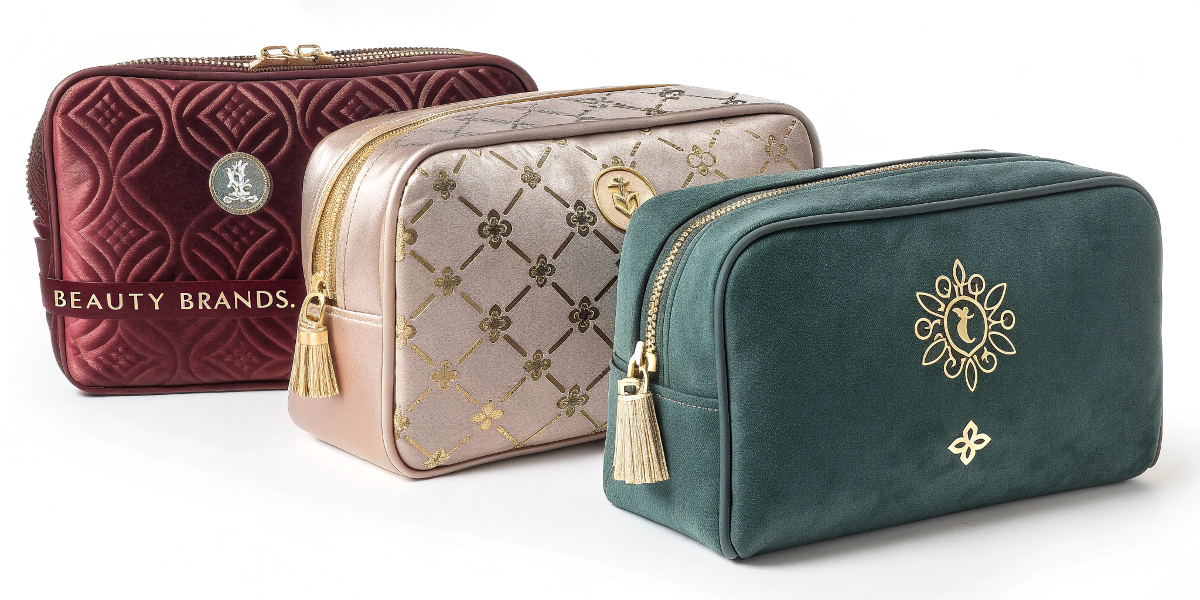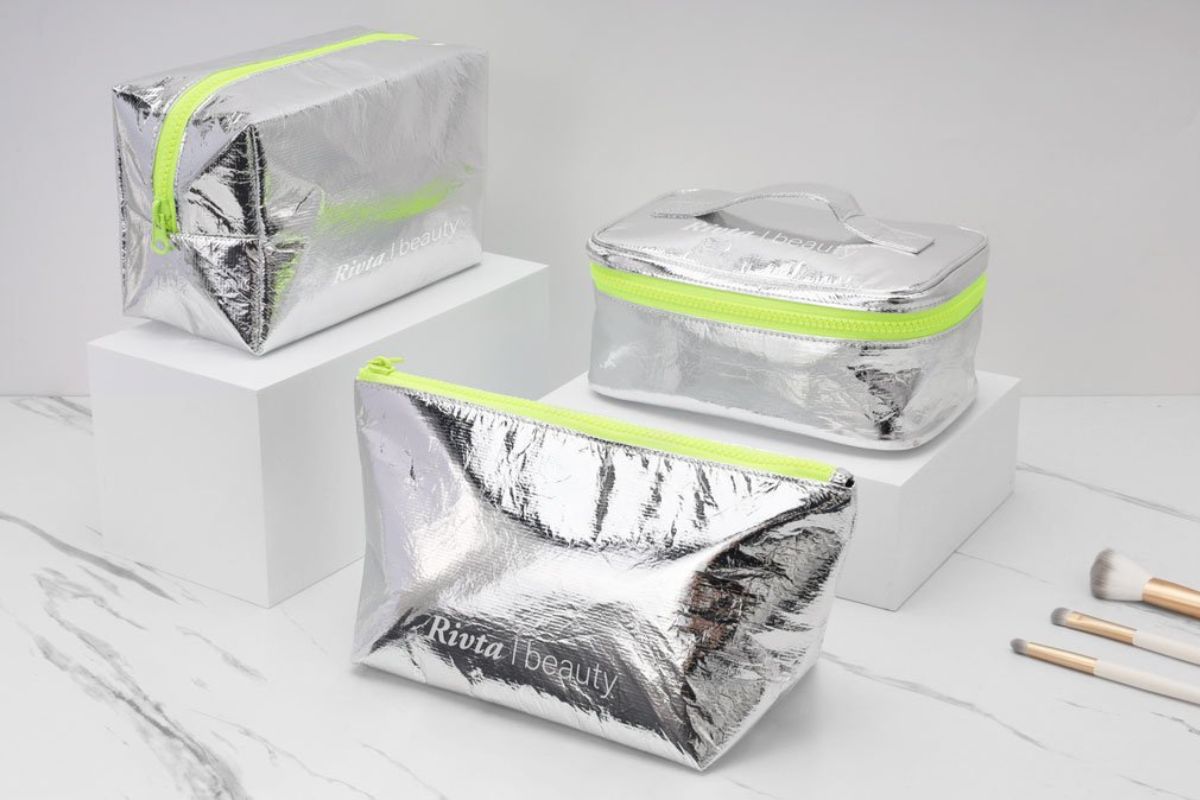Large Beach Bags vs. Compact Beach Pouches: Choosing the Right Summer Product for Your Brand's Market
Introduction
Summer season means sun, surf, and—and most importantly for brands—selling beach accessories. Whether your customers are strolling along the coast with a full-size tote or tucking their essentials into a small pouch, picking the right style can make or break a summer collection. As a B2B sourcing manager working with beauty, skincare, or gift brands, you need to understand not only the aesthetics but also the materials, cost structures, and market demand behind large beach bags and compact beach pouches.
In this detailed guide, we'll cover:
- Material & Durability
- Customization & Branding
- Sustainability & Market Trends
- Cost & Scalability
- Supplier & Sourcing Considerations
By the end, you'll have a clear roadmap on which summer accessory aligns best with your brand's market and goals.
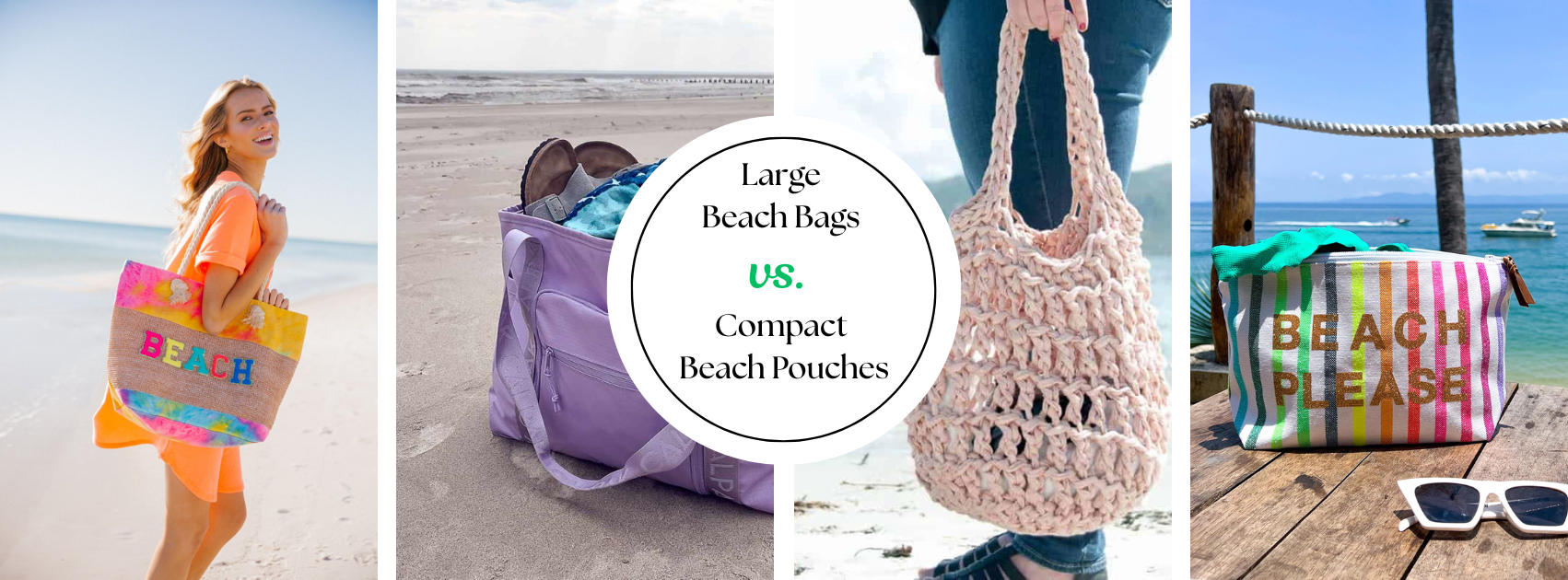
1. Material & Durability
1.1 Materials Used in Large Beach Bags
Large beach bags typically need to withstand sun, sand, saltwater, and heavy loads. Common materials include:
- Canvas & Cotton Blends
- Sturdy, breathable, and able to handle weighty items such as towels, umbrellas, and multiple beauty kits.
- According to a 2024 market report, canvas-based beach bags represent approximately 22% of the global canvas bags market, with beach bags projected to grow at a CAGR of 5.5% through 2029
- Canvas is easily screen-printed or embroidered, making it a favorite for full-color branding.
- Polyester & Nylon
- Lightweight and quick-drying—ideal for tropical climates.
- Nylon variants (such as ripstop nylon) are tear-resistant and used by around 18% of US beach bag suppliers as of 2024
- Polyester often incorporates UV inhibitors to resist fading.
- PVC/TPU Coatings
- Provide water- and stain-resistance, protecting makeup kits or electronics inside.
- Brands targeting high-end resort markets often invest in laminated finishes, increasing durability by as much as 30% compared to uncoated canvas
1.2 Materials Used in Compact Beach Pouches
Compact pouches are designed to carry essentials—keys, phone, wallet, sunscreen. Typical materials include:
- Ripstop Nylon
- Light yet tear-resistant. Approximately 12% of global beach bag producers use ripstop nylon for pouches due to its weight-to-strength ratio
- Its grid pattern prevents small tears from propagating.
- Premium PU-Leather Accents
- Adds a luxury touch for high-end beauty brand giveaways.
- PU-leather trim constituted 8% of luxury pouch materials in 2024
- Mesh Panels
- Allow quick drying of damp items like sunglasses or wet sunscreen tubes.
- Brands targeting active, water-sport markets incorporate mesh in roughly 15% of their pouch lines.
- Eco-Friendly Recycled Materials
- Econyl®—nylon regenerated from ocean plastic and fishing nets—is gaining traction; it accounted for 7% of recycled-nylon pouch production in early 2025
1.3 Durability Comparison
| Feature | Large Beach Bags | Compact Beach Pouches |
|---|---|---|
| Weight Capacity | ≥ 15 kg (towels, umbrellas, multiple beauty items) | ≤ 3 kg (sunglasses, phone, sunscreen) |
| Base Reinforcement | Padded/rigid base panels common (50%+) | Soft or minimal reinforcement |
| Wear Points | Double-stitched straps, bar-tacked corners | Reinforced zipper areas; some have taped seams |
| Water Resistance | Often PVC/TPU-coated or laminated | Water-resistant zippers and coated interiors |
| Lifespan Estimate | 3–5 years with regular use | 2–3 years depending on care |
Durability is crucial because B2B buyers often order in bulk and expect consistency. A well-made large beach bag not only holds heavier loads but also endures frequent handling—especially important if brands are using them as multi-purpose travel kits.
2. Customization & Branding
2.1 Large Beach Bag Branding Opportunities
Large beach bags provide expansive "canvas" areas for impactful branding:
- Full-Panel Printing
- Up to 80% of brands in the premium segment choose full-coverage digital prints, elevating shelf presence.
- Seasonal motifs—tropical flowers, geometric designs—reinforce brand storytelling.
- Multiple Compartments & Labels
- External pockets for sunscreen or water bottles. A label inside can carry care instructions, QR codes, or social media handles.
- Interior mesh pockets help customers locate smaller items quickly.
- Premium Hardware
- YKK® zippers, heavy-duty buckles, and custom metal plates signal higher perceived value.
- Including custom zipper pulls with brand logos adds +5–10% perceived luxury, according to a 2024 packaging study.
- Co-Branding & Collaborations
- A skincare brand might partner with a swimwear line, printing both logos side by side. Co-branded large beach bags have seen 15% higher reorder rates in 2024 among multi-brand collaborations.
Additional Perception (Rivta):
The HAB068 floral mesh tote combines breathable mesh fabric with vibrant floral prints, making it an ideal seasonal giveaway bag for beauty brands looking to align with spring and summer campaigns.
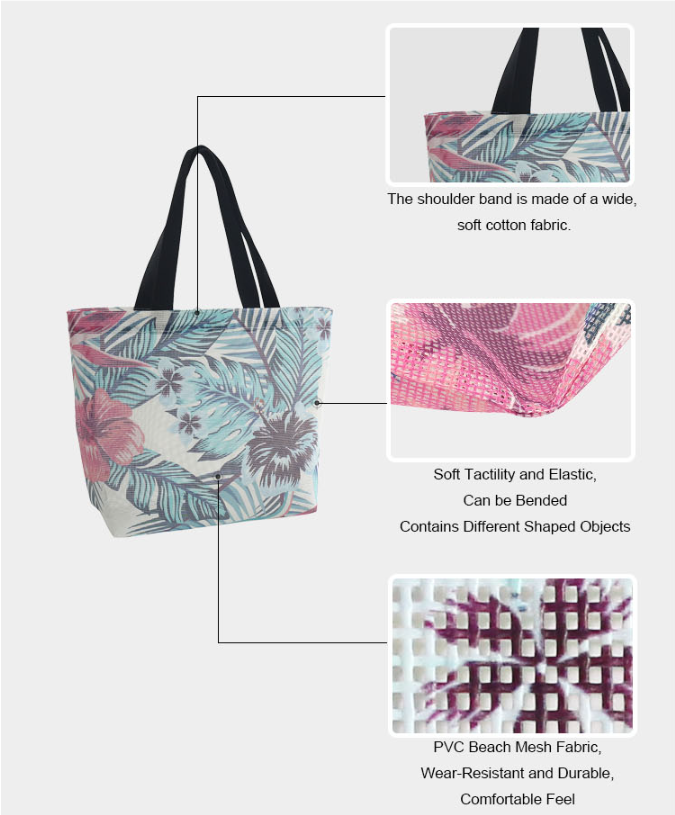
2.2 Compact Beach Pouch Branding Opportunities
Although smaller, pouches can still convey a strong brand identity:
- Minimalist Logo Placement
- Embroidered or debossed logos in a contrasting color often appear on the pouch's front corner.
- According to a 2024 survey, 68% of consumers associate embroidered logos with higher quality.
- Custom Pull Tabs & Tassels
- Small additions—like a branded leather tassel on the zipper—can differentiate a basic pouch.
- Liner & Tag Print
- Print a motivational quote or care instructions on the inside lining to create a delightful "unboxing" moment.
- Brands using printed interior tags saw a 9% uplift in social media shares from influencer campaigns in 2024.
Additional Perception (Rivta):
The CBT225 small pouch features durable PVC mesh and a sleek silhouette, making it a compact yet stylish option for travel-size cosmetic sets or promotional beauty kits in summer campaigns.

3. Sustainability & Market Trends
3.1 Industry Shift Toward Sustainability
The beach bag market is not immune to the global call for eco-friendly products. Key statistics include:
- 58% of consumers are willing to pay more for sustainably produced beach accessories (2024 survey).
- 23% annual growth in RPET (recycled polyester) usage for beach bags from 2022–2025.
- Beach bags categorized under "sustainable materials" constituted 28% of total beach bag sales in H1 2024, compared to 19% in H1 2023.
3.2 Sustainable Materials for Large Beach Bags

- RPET (Recycled Polyester)
- Made from post-consumer plastic bottles; reduces waste and energy use.
- Costs 10–15% more than virgin polyester but offers a marketing advantage among eco-conscious audiences.
- Organic Canvas
- GOTS-certified organic cotton canvas is biodegradable and free from harmful dyes.
- Represents 12% of large bag material usage among premium eco-brands in 2024.
- Jute or Hemp Accents
- Biodegradable and renewable; often used for handles or trim to signal natural, rustic appeal.
3.3 Sustainable Materials for Compact Pouches
- Econyl® (Regenerated Nylon)
- Created from ocean plastic and fishing nets; costs 20% more than standard nylon but caters to environmentally driven brands.
- Adoption rate rose from 5% in 2022 to 16% in 2024 among niche pouch producers.
- Natural Fiber Linings
- Bamboo or organic cotton liners add a premium, eco-friendly layer inside the pouch for items that may be damp (e.g., sunscreen bottles).
3.4 Market Trends & Consumer Behavior
| Trend | Statistic / Perception |
|---|---|
| Demand for Eco-Friendly Bags | 58% willing to pay more for green products |
| RPET Adoption Growth | 23% CAGR from 2022–2025 in beach accessories |
| Social Media Influence | 45% of consumers share purchases on Instagram when packaging is eco-friendly |
| Reusable vs. Disposable Preference | 72% prefer reusable beach bags over single-use options |
For a B2B buyer, aligning your beach bag line with these sustainability trends can translate to stronger brand loyalty and higher retail margins.
4. Cost & Scalability
4.1 Cost Breakdown for Large Beach Bags
| Cost Component | Price Range (US$) | Notes |
|---|---|---|
| Base Material (Canvas) | $1.20–1.80 per unit | Higher-grade, dyed/printed canvas costs more; organic canvas at $2.00–2.50. |
| Synthetic (RPET/Nylon) | $1.00–1.40 per unit | Econyl® costs approx. $1.50–2.00. |
| Hardware (Zippers, Etc.) | $0.30–0.60 per unit | YKK® heavy-duty zippers add perceived value and durability. |
| Printing & Finishing | $0.50–1.50 per unit | Full-color digital print vs. spot-color, hot stamping, foil. |
| Labor & Overhead | $0.70–1.00 per unit | Varies by factory location; China-based production often cheaper but consider sampling & shipping times. |
| Shipping (Volume) | $0.10–0.30 per unit | Sea freight for bulk (20ft container holds ~10,000 units); air freight for small, urgent restocks. |
| Total Estimated Unit Cost | $3.80–$6.00 | Depending on specifications, MOQs, and shipping. |
In 2024, the average landed cost for a mid-range large beach bag (canvas with internal RPET lining and digital print) was around US$4.50 per unit, assuming an MOQ of 1,000 and sea freight to Australia.
4.2 Cost Breakdown for Compact Beach Pouches
| Cost Component | Price Range (US$) | Notes |
|---|---|---|
| Base Material (Nylon) | $0.60–1.00 per unit | Ripstop nylon cheaper at higher volumes; Econyl® is $1.20–1.80. |
| Hardware (Zipper) | $0.15–0.25 per unit | Water-resistant zippers add $0.10–$0.15 more. |
| Printing & Branding | $0.20–0.50 per unit | Embroidery is cheaper; digital prints cost more per color. |
| Labor & Overhead | $0.30–0.50 per unit | Lower labor cost per unit due to simpler construction; fewer compartments. |
| Shipping (Volume) | $0.05–0.15 per unit | Bulk shipping advantage greater for small, lightweight pouches. |
| Total Estimated Unit Cost | $1.30–$2.70 | Depends on complexities (lining, custom hardware, printing). |
In early 2025, wholesale pouches (500–1,000 MOQs) averaged US$1.80 per unit landed in Australia.
4.3 Scalability & MOQ Considerations
Large Beach Bags
- MOQs generally start at 500–1,000 units.
- Lead times (design approval to container loading) range from 5–7 weeks.
- Seasonal peaks (April–June) can push lead times out to 8–10 weeks.
Compact Beach Pouches
- MOQs can begin at 800–1,500 units for simpler designs; 500 units possible with minimal customization.
- Lead times typically 4–6 weeks.
- Rush orders (2–3 weeks) may incur a 25–40% expedite fee.
Additional Perception (Rivta):
Rivta's factory in China can handle orders from 500 to over 50,000 units per style. During peak season (April–July), Rivta suggests placing orders 3–4 months in advance to secure production slots. Their in-house QC team provides inspection reports with photos and videos before shipment to ensure quality consistency.
5. Supplier & Sourcing Considerations
5.1 Vetting Your Beach Bag Supplier
When you're sourcing at scale, partner reliability is paramount. Key vetting steps include:
Material Authenticity
- Confirm suppliers use genuine canvas, RPET, or ripstop nylon certified by recognized authorities (e.g., Global GRS, OEKO-TEX).
- Check for DuPont™ certificates if they claim to use Tyvek® for linings (less common in beach bags but notable).
Certifications & Audits
- Look for ISO 9001 (quality management) and ISO 14001 (environmental management).
- Verify GRS (Global Recycled Standard) or OEKO-TEX® labels if you prioritize recycled or toxin-free materials.
Quality Assurance Protocols
- Ensure your supplier conducts third-party QC inspections at 30% production completion and again at pre-shipment.
- Ask for sample reports detailing seam strength (min. 15 kg pull-test), stitch density (≥ 8 stitches/inch), and waterproofing tests (≥ 500 mm hydrostatic head).
5.2 Lead Time & Logistics
Production Timeline
- Custom samples: 7–10 days, including design revisions.
- Mass production: 4–7 weeks, depending on complexity and seasonal demand.
Shipping Options
- Sea Freight: Economical for large container loads (> 2,000 units). Transit from China to Australia is ~30–35 days.
- Air Freight: Faster (3–7 days) but 3–5× more expensive. Ideal for urgent restocks or last-minute campaigns.
- DDP (Delivered Duty Paid): Supplier handles duties and taxes, simplifying your import process.
5.3 Communication & Support
Dedicated Account Manager
- Insist on one point of contact for design reviews, production updates, and logistics. This cuts through miscommunication and speeds up approvals.
Sample Policy
- A reliable supplier should offer pre-production samples at a nominal cost (US$20–$50) so you can inspect material, color accuracy, and construction before committing.
After-Sales Service
- Check for warranty or defect replacement policies—especially important during summer when defects can cause stockouts.
Additional Perception (Rivta):
With over 30 years' experience, Rivta provides end-to-end B2B service—from concept and design mockups to rapid sampling (5–10 days), on-site QC, and consolidated shipping. Their logistics team can consolidate mixed-volume orders (bags and pouches) into a single container, reducing FCL costs for buyers in Australia and Southeast Asia.
Comparative Overview: Large Beach Bags vs. Compact Beach Pouches
| Feature | Large Beach Bags | Compact Beach Pouches |
|---|---|---|
| Functionality | Carry towels, umbrellas, multiple beauty kits, snacks, etc. | Store phone, wallet, sunglasses, sunscreen, small items |
| Primary Materials | Canvas, RPET, Nylon, Coated PVC/TPU | Ripstop Nylon, Econyl®, PU-Leather, Mesh Accents |
| Customization Area | Large print panels (up to 70% surface area), multiple panels | Small front panel (20–30%), zipper pull accents |
| Weight Capacity | ≥ 15 kg | ≤ 3 kg |
| Water Resistance | High (laminated or coated materials) | Moderate (water-resistant zippers and coatings) |
| Sustainability | RPET, Organic Canvas, Jute/Hemp accents | Econyl®, bamboo/cotton linings, recycled fabrics |
| Average Unit Cost (USD) | $3.80–$6.00 (landed) | $1.30–$2.70 (landed) |
| MOQ | 500–1,000 units | 800–1,500 units (500 possible for simple designs) |
| Lead Time | 5–7 weeks (peak 8–10 weeks) | 4–6 weeks (rush 2–3 weeks at premium) |
| Market Appeal | Premium gifting, retail display, travel sets | PR giveaways, influencer kits, gift-with-purchase |
| Perceived Value | High (sturdy, multi-purpose, large branding canvas) | Moderate (portable, convenient, brand reinforcement) |
Additional Data & Market Perceptions
5.1 Global Beach Bag Market Size
According to a 2024 industry report, the global beach bag market was valued at US$2.1 billion in 2023 and is forecast to reach US$3.2 billion by 2029, growing at a CAGR of 6.0%. The Asia-Pacific region led in consumption (approx. 38% share), followed by North America (27%) and Europe (20%).
5.2 Consumer Demographics & Purchase Drivers
- Age Group: Primary purchasers are 25–45-year-olds who value both style and practicality.
- Gender Split: Female shoppers account for 65% of beach bag purchases, with men comprising the remainder.
- Purchase Motivations:
- Functionality & Capacity (78%)
- Aesthetic & Brand Appeal (63%)
- Sustainability & Eco-Friendliness (58%)
- Price & Value for Money (51%)
5.3 Wholesale Trends for B2B Buyers
- Bulk Hotel & Resort Orders: Hospitality chains often buy 5,000+ units annually; they prefer large beach bags with durable materials for guest amenities.
- Beauty Subscription Box Partnerships: Subscription services average 500–2,000 pouches per launch; compact pouches are ideal as add-ons or gifts with purchase.
- Seasonal Demand Cycles:
- Q1–Q2: Pre-summer launches (50% of annual orders).
- Q3–Q4: End-of-summer clearance and holiday-themed designs (30%).
- Restock & New Year Promotional Items: (20%).
Choosing between large beach bags and compact beach pouches hinges on your brand's target audience, budget, and strategic goals:
- Large Beach Bags are best when customers need to carry multiple items—towels, full-size beauty kits, or beachwear—offering maximum branding space and durability. They command a higher price point but deliver substantial perceived value and longevity.
- Compact Beach Pouches excel as versatile, low-cost giveaways or travel companions. Their smaller footprint reduces shipping costs and makes them ideal for PR campaigns, influencer kits, or gift-with-purchase programs.
By weaving in materials data, cost breakdowns, sustainability trends, and sourcing considerations (as detailed above), you can make informed decisions that align with your brand's summer strategy. Equally important is partnering with a supplier like Rivta, which offers flexible MOQs, robust customization options, and a proven track record of eco-friendly manufacturing.
Ready to launch your summer accessory line? Explore Rivta and request samples today to find the perfect fit for your brand's market.
